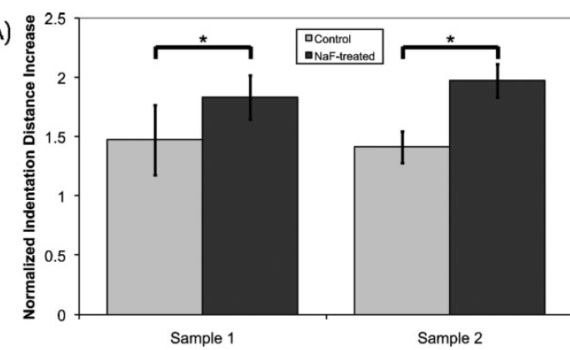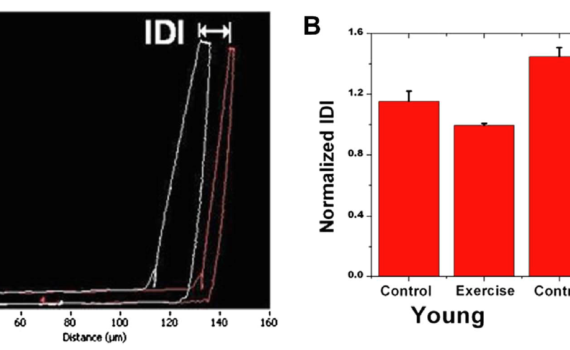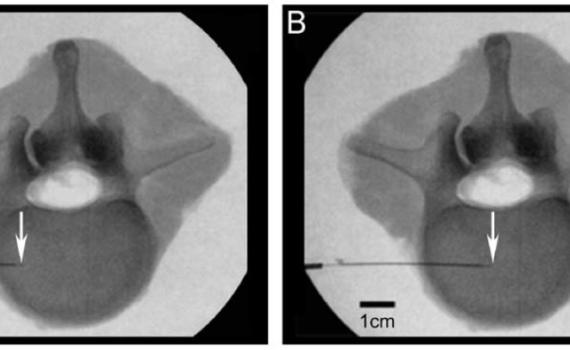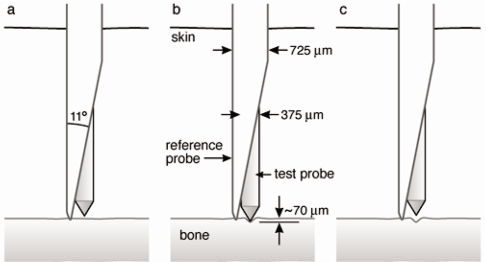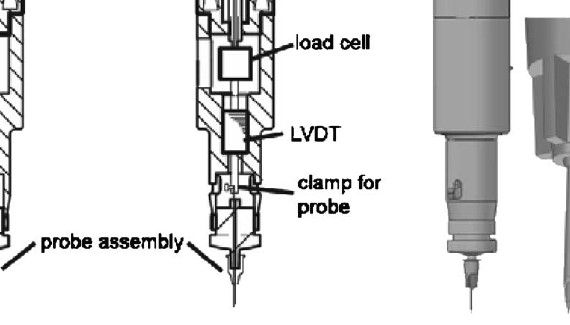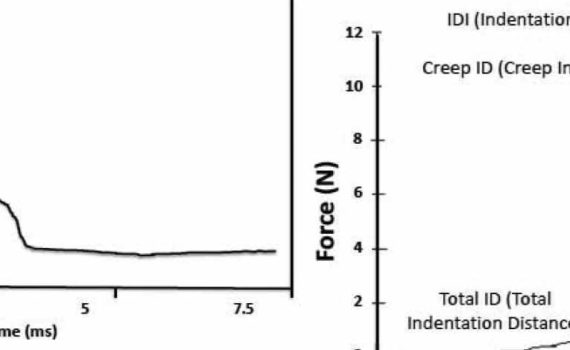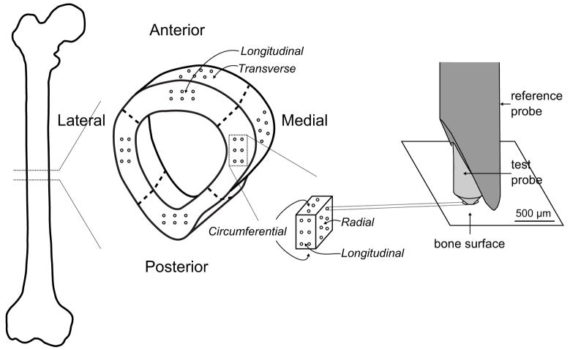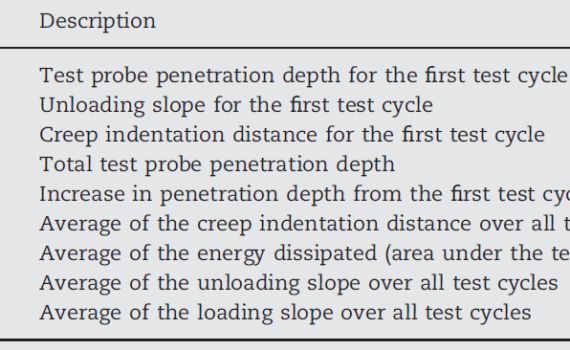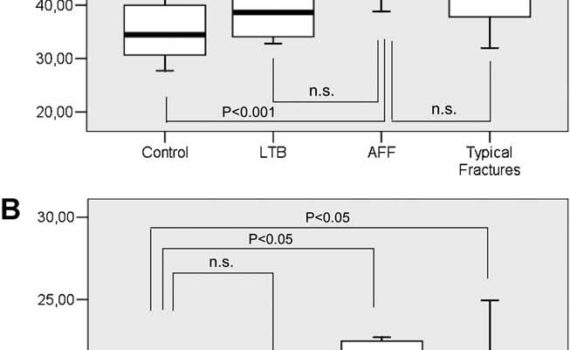Abstract High doses of sodium fluoride in bones lead to severe softening, by weakening interfacial properties between the inorganic minerals and the organic components, while leaving mineralization unchanged. This leads to reduction of microdamage and associated stress‐whitening pointing to a change in failure mode. Accordingly, elastic modulus, failure stress, and […]
BioDent
Abstract Here we describe modifications that allow the bone diagnostic instrument (BDI) [P. Hansma et al., Rev. Sci. Instrum. 79, 064303 (2008); Rev. Sci. Instrum. 77, 075105 (2006)], developed to test human bone, to test the femora of mice. These modifications include reducing the effective weight of the instrument on […]
Abstract Despite recent advances in imaging diagnostic technology and additional treatment options our ability to prevent or inhibit discogenic back pain has not drastically improved. The challenge of linking early degenerative patterns to dysfunction and pain remains. Using a novel material testing device designated the Tissue Diagnostic Instrument (TDI) we […]
Abstract The bone diagnostic instrument (BDI) is being developed with the long-term goal of providing a way for researchers and clinicians to measure bone material properties of human bone in vivo. Such measurements could contribute to the overall assessment of bone fragility in the future. Here, we describe an improved […]
ABSTRACT The bone diagnostic instrument is designed to measure materials properties of bone even if it is covered with soft tissue such as periosteum, connective tissueand skin. It uses (1) a probe assembly, consisting of a reference probe that penetrates soft tissue and stops on the surface of the bone and a test probe that is inserted into the bone, (2) an actuation […]
Abstract Osteoporosis is defined as a reduction in bone mass and impairment of bone quality that lead to bone fragility and fracture risk. Bone quality includes a hierarchy of properties from macroscopic to nanoscale level. Several techniques have been developed in an attempt to measure these non-density properties. Densitometry, high-resolution […]
Abstract Densitometry and imaging techniques are currently used in clinical settings to measure bone quantity and spatial structure. Recently, Reference Point Indentation has opened the possibility of directly assessing the mechanical characteristics of cortical bone in living individuals, adding a new dimension to the assessment of bone strength. Impact microindentation […]
Abstract Reference point indentation (RPI) is a microindentation technique involving 20 cycles of loading in “force-control” that can directly assess a patient׳s bone tissue properties. Even though preliminary clinical studies indicate a capability for fracture discrimination, little is known about what mechanical behavior the various RPI properties characterize and how […]
Abstract We study the reference point indentation (RPI) technique which has a potential to directly measure mechanical properties of bone in patients. More specifically, we tested 6 month swine femoral cortical bone at mid-diaphysis region to investigate the effect of several testing variables on the RPI outputs. They include the […]
Abstract Atypical femoral fractures (AFF) associated with long-term bisphosphonates (LTB) are a growing concern. Their etiology is unknown, but bone material properties might be deteriorated. In an AFF series, we analyzed the bone material properties by microindentation. Four groups of patients were included: 6 AFF, 38 typical osteoporotic fractures, 6 […]

